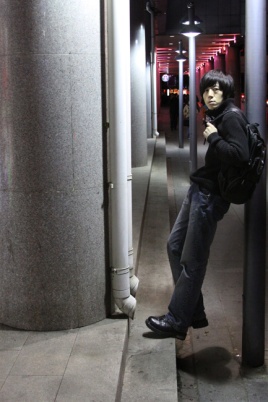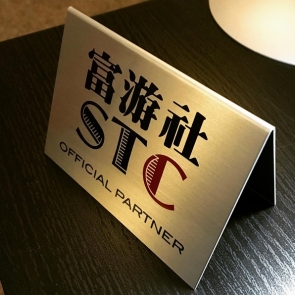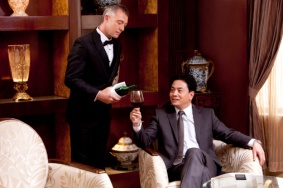 How to define the new trends in luxury travel? A new generation of wealthy individuals is evolving the concept of luxury travel. Luxury hotel marketing strategies must stay aligned with their customer base and think “outside the suite.”
How to define the new trends in luxury travel? A new generation of wealthy individuals is evolving the concept of luxury travel. Luxury hotel marketing strategies must stay aligned with their customer base and think “outside the suite.”
Filip Boyen, CEO of Small Luxury Hotels of the World, comments: “Luxury travel used to be all about visiting certain destinations, being seen in the right place by the right people, and generally enjoying the high life in a more ostentatious manner, all while getting the exact same experience as everyone else. Luxury hotels reflected this, they were grand and provided people with a platform to enjoy themselves.”
A recent shift away from the hotel stay and towards the actual experience itself has caused luxury hotel marketing strategies to evolve quickly to meet the needs and expectations of their wealthy clientele.
Philippe Brown, founder at bespoke travel planners Brown and Hudson, explains, “With ideas like ‘Luxpedition’ we make challenging grand expeditions to the world’s most remote corners accessible to people who might otherwise be put off by arduous conditions. This has opened up a whole new market of mid-life crisis sufferers who would like to be Bear Grylls but want their comforts and moments of specific luxury.”
How then can the concept of luxury hotel marketing be adjusted accordingly to capture a market that still wants the luxury but also wants the unique experience too? The answer lies in staying true to the key luxury brand values of authenticity and quality, while also adding in the experience element as part of the holistic package.
Pierre Gervois, Founder of Gervois Hotel Rating, the New York based luxury hotel rating system for U.S. hotels added “ The new generation of wealthy travelers and guests are not like their parents, who were attracted by flashy hotels made to display the arrival in a new social status, but now are attentive to sophistication, refinement, and all the discreet details and signs of recognition of the new elite”
Albert Herrera, SVP of Global Product Partnerships at Virtuoso, says, “Authenticity has become a buzzword. It really does reflect the current trend of giving the guest something that is unique to that particular destination. Hotels started down the path of authenticity by offering a greater sense of place, especially with new builds. First it was apparent in the architecture and design, then with the furnishings and styling. From there, the concept has expanded to fully integrate local customs and cuisine, and provide the ability to fully explore or celebrate the culture.”
Herrera comments: “Hotels have done a great job of developing and partnering with their local communities to create experiences that highlight the destination. Whether it’s a morning run with the General Manager, sourcing the fresh catch of the day with the executive chef or even being an English teacher for a day to local schoolchildren, ‘living like a local’ is a trend that will continue.”
Another key feature of luxury hotel marketing is offering the ability to totally switch off from everyday life. Being immersed in a local culture and experiencing that life is one way to do this, but offering an out of this world experience is another.
Brown says: “We are regularly approached by clients who want to join our missions to explore the wreck of the Titanic and others looking to invest in a longer stay at the International Space Station, or to do something shorter with Virgin Galactic or with some of the other more interesting options.” Here the role of luxury hotel marketing is to offer the accommodation that supports the experience, maintaining the luxury while supporting the immersive element.
Personalization adds a great deal to this ethos. Today’s guests want their hotels to respond to them in a personalized and tailored way; they want to be recognized as an individual.
Gervois explains: “One of the issues in luxury hospitality in the last twenty years was the arrogance of staff, and the discriminatory practices on race, nationality, religion or gender identity, that went largely out of scrutiny and were tolerated by luxury hotel groups”.
“These unacceptable practices slowly start to be addressed, but we hear oftenly complaints from travelers who feel discriminated in the luxury hotel segment, and Gervois Hotel Rating fights to improve this issue with the industry.”, Gervois added.
However, this point applies both ways. Luxury hotel marketing should also take into consideration how the personality of the owners, management, and their staff contributes to the overall feel and experience of the hotel. This ties in well with the desire for authenticity and having a real experience.
Boyen explains: “Hotels are becoming more aware that their offerings need to go beyond that of the suites, butler, concierge – the hardware. Hotels just need to be themselves. They need to be mindful of the things that make them interesting to guests – be it their location, history, owner or vision – and not try to conform to fit in with any expectations of what a luxury hotel ‘should’ be.”
Ultimately, the way a wealthy traveller defines their ideal experience remains highly personal. Accordingly, best practice for today’s luxury hotel marketing experts is to leverage market research on their target clientele, as well as individual research on high-spending VIP guests, in order to understand their preferences and create a memorable experience– both inside and outside the suite.
 How guests choose their hotels? International hotel ratings systems exist for a long period of time. Some are amalgamations of other ratings systems; some, like TripAdvisor, average out user ratings, and everyone know it’s partly fake. (Oops, it’s not politically correct, sorry guys); and then there’s the
How guests choose their hotels? International hotel ratings systems exist for a long period of time. Some are amalgamations of other ratings systems; some, like TripAdvisor, average out user ratings, and everyone know it’s partly fake. (Oops, it’s not politically correct, sorry guys); and then there’s the  Conjoining the world of Art with Architecture and Culture,
Conjoining the world of Art with Architecture and Culture,  d in real estate internationally. Excluding their real estate investment abroad, they collectively spend & invest more than US$700M per year in travel related expenses.
d in real estate internationally. Excluding their real estate investment abroad, they collectively spend & invest more than US$700M per year in travel related expenses. The Gervois rating system is a hotel rating system created in 2016 by Pierre Gervois, a successful NYC based travel media entrepreneur and frequent traveler in the United States. Founder of the STC magazine, the leading luxury travel magazine about the U.S. in Chinese Mandarin, he has an extensive experience about reviewing hotels for international and discerning travelers.
The Gervois rating system is a hotel rating system created in 2016 by Pierre Gervois, a successful NYC based travel media entrepreneur and frequent traveler in the United States. Founder of the STC magazine, the leading luxury travel magazine about the U.S. in Chinese Mandarin, he has an extensive experience about reviewing hotels for international and discerning travelers.
 They speak English now (Just in case you didn’t notice).
They speak English now (Just in case you didn’t notice). Among the biggest trends among China’s luxury travelers is the growing popularity of boutique hotels, according to the ILTM Asia event in Shanghai.
Among the biggest trends among China’s luxury travelers is the growing popularity of boutique hotels, according to the ILTM Asia event in Shanghai. According to
According to  China’s outbound luxury travelers spend $65,000 per household on tourism per year, including $34,000 on travel shopping, according to a new study from
China’s outbound luxury travelers spend $65,000 per household on tourism per year, including $34,000 on travel shopping, according to a new study from 